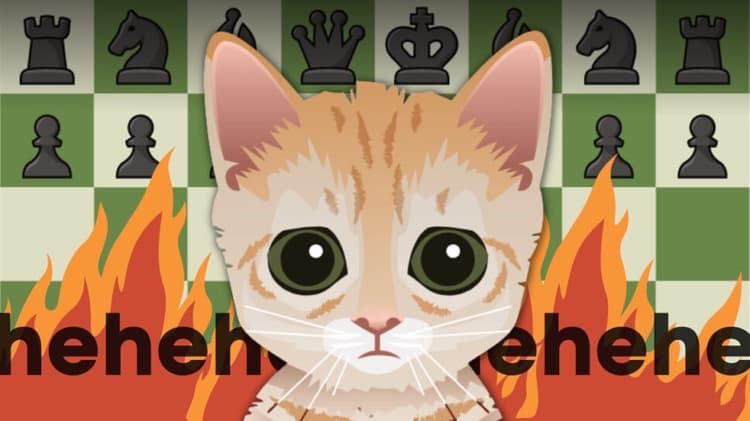
This post is part of a collection of thoughts I’m putting together as a companion to Five Seven Five, a stand-alone book that uses haiku I wrote as input to an AI art generator. It was a super-fun project to build. You can get it by backing my kickstarter. Or you can pre-order it at several online retailers.
g the project I decided I wanted to explore the bigger picture of how AI is impacting our world, and specifically the creative world I dwell in.
Today let’s talk about Mittens the cat.
I follow a brilliant and prolific sportswriter named Joe Posnanski. My guess is that you’ve already heard of him. But if you haven’t you should go search him out. The guy is just great. He can and does write about all sorts of things.
Turns out, he’s also a fan of chess.
A couple days back he wrote a piece about how Artificial Intelligence, including Mittens, the AI cat, has broken the game. Mittens plays chess, you see. She’s one of the long lines of AI chess players that have been in development for essentially as long as there have been computers.
And she’s a ringer.
You really do need to read the article, but since folks are busy and there are only so many hours in a day, I’ll break down a couple points:
- Since the time of man, chess has been at least partially an art, full of innovation and creativity.
- Bold, creative moves hold staying power in that community. They are maybe like the “Immaculate Reception” for football fans, or “The Shot Heard Around the World” for baseball fans.
- But chess is a game. Its moves are constrained. Ultimately, it can be figured out.
- And that’s what AI does.
- So now, there exist no humans who can beat an even moderately talented AI.
- Mittens is such an AI.
Posnanski is positing that the AI has killed the game—or at least removed the artistry in it. And to a degree, that’s almost certainly true.
It strikes me to ask, though, what is it that made chess an art in the first place?
Given that art, in its basic nature, is something that makes us react—something that carries an emotional context—what exactly is it that allows its followers to see beauty in it? If art speaks to us because of its creativity, why would anyone have ever thought of chess as an artistic, creative endeavor? At its roots, chess is a game of mathematics. It’s a game of strategy. The greatest human players spend hundreds of calories of thought to hold broad ranges of probabilities and if-then loops in their heads as they play. Those loops are, essentially, algorithms.
Was chess ever an art, or was it simply a test of humanity’s ability to hold cold, hard equations in our heads?
Is there a difference?
It depends, doesn’t it?
Let’s take a different path for a moment. How is chess like visual art? Or is chess more like music?
I argue here that a game of chess is similar to a written manuscript (or a musical tablature) in the sense that all major chess matches are recorded, move by move, in algebraic notation that describe each step. These records let an aficionado of the game pick up the match and read it again. When they do that, some feel a certain sense of beauty inside those marks.
Why is that?
My own thoughts go like this:
Art lies in the universe of the unknown, or the new. The attraction of an art lies at least partially in its uniqueness.
While moves on a chessboard are not actually infinite, the total combinations of every game that could possibly be played is technically knowable. But, when it comes to chess as a pragmatic human endeavor, that fact is almost meaningless. The maximum human capability to hold the amount of information needed to crack the game of chess is incredibly low relative to that bar. No human can play every permutation on every board. Hence, humans can discover things they had never contemplated before. It’s that discovery that becomes the art.
When Mittens plays, she is not doing art because Mittens already knows the answer.
Prior to the game being cracked, when humans played, art was possible. Life is messy for us, simply because we don’t know what’s going to happen next. We can argue about things we like and don’t like because there exists no baseline from which a “truth” can be determined. But when we know there is a truth—when we are aware that the answer exists and is findable—the tone of that conversation changes.
In the game of chess, art springs from our state of ignorance (using that term in the very best possible way). And chess, as messy and complicated as it is for the human brain, can stand in for the universe. Do we have destiny? Free will? I’m not sure. But on a chess board the world is so complex that, like for the person going about their day-to-day lives, the question doesn’t matter.
There is an art to the way we live our lives, after all.
And part of that art is because there is no one true way to “win.”
That’s my story, anyway. I came up with it myself, so I think I’ll stick with it.
For a while, anyway.